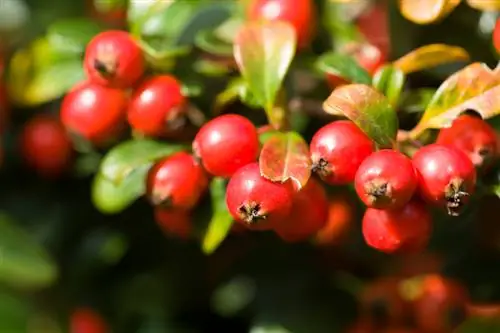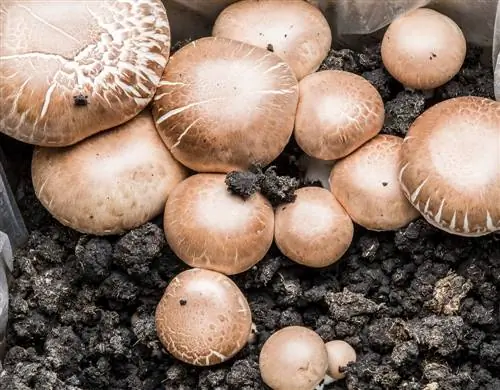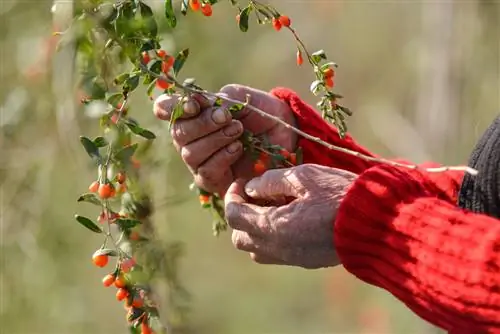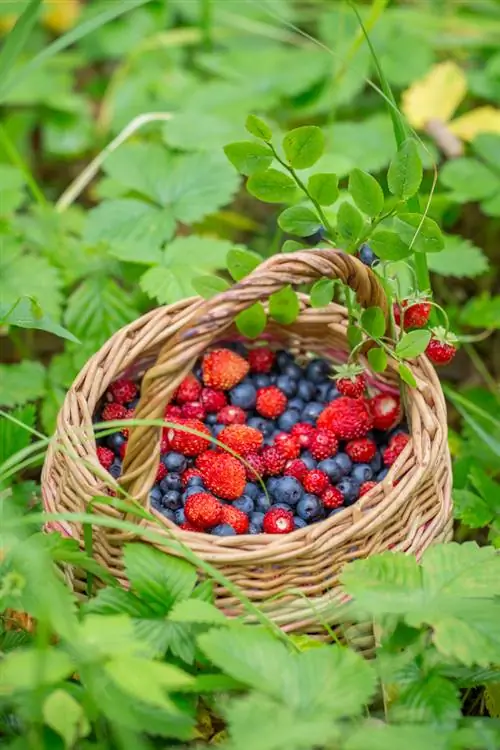- Author admin [email protected].
- Public 2023-12-16 16:46.
- Last modified 2025-01-23 11:21.
The leaves of the serviceberry usually impress with their particularly colorful autumn colors, but they should not necessarily be eaten. The situation is different with the fruits that ripen in June or July, which were once used for consumption to a much greater extent than today.
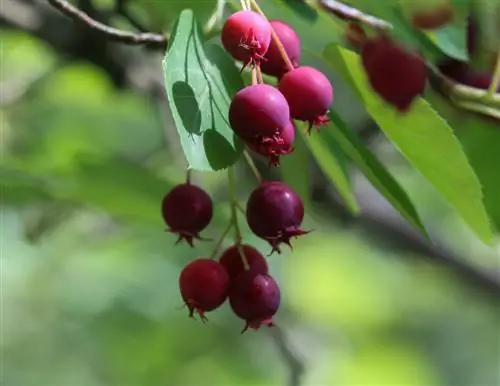
Is the serviceberry edible?
The fruits of the serviceberry are edible and ripen in June or July. They should only be harvested when they have reached a dark purple or blue-black color. The fruits can be eaten raw or made into jams, juices, liqueurs and tea.
The comeback of a versatile wild fruit
The serviceberry is planted by many hobby gardeners today because of its relatively undemanding care and the versatile possibilities of cultivating it in a container or branching out larger specimens. Previous generations appreciated the serviceberry, which thrives even on poor soils, primarily because of its numerous fruits. In some areas, the name currant tree has been passed down for the rock pear because the fruits were used as a substitute for currants. The fruits, which are visually reminiscent of blueberries, are experiencing a certain renaissance these days because their ingredients are said to have positive effects on human he alth.
The decisive factor is the time of harvest and the type of consumption
Even if it may sometimes be difficult to compete with the birds in the garden: the fruits of the serviceberry should only be harvested in June or July when they are fully ripe, indicated by the color change from red to a dark violet or blue-black becomes. There are definitely valid reasons for this, because unripe fruits contain a higher content of so-called cyanogenic glycosides. Even after consuming large quantities of chewed seeds, certain gastrointestinal problems can sometimes occur due to the hydrogen cyanide that is released. However, since when raw fruits are consumed, the unchewed seeds are usually excreted undigested to a large extent, there is no risk of drastic poisoning potential even if consumed more frequently. If you want to be on the safe side, you can simply enjoy the fruits in further processed form: the ingredients responsible for the production of hydrogen cyanide (which are also found in apple seeds) are effectively broken down by cooking the fruits.
Refine the fruits fresh after harvest into numerous delicacies
A whole range of tasty delicacies can be made from the fruits of the rock pear, which taste slightly like marzipan:
- Jams
- Juices
- Liqueurs
- Rock Pear Tea
Removing the fruit stalks is a bit laborious, as they sometimes cannot be easily removed from the fruit. However, these should definitely be removed before further processing.
Tip
In Canada, the use of the fruits of the serviceberry is very important, not least because of the traditions of the indigenous people. The so-called Saskatoon berries are not only valued there as dried fruit, but are also processed into pemmican together with fat and dried meat. Hikers and athletes value pemmican on longer excursions in nature as a source of energy in emergencies.



